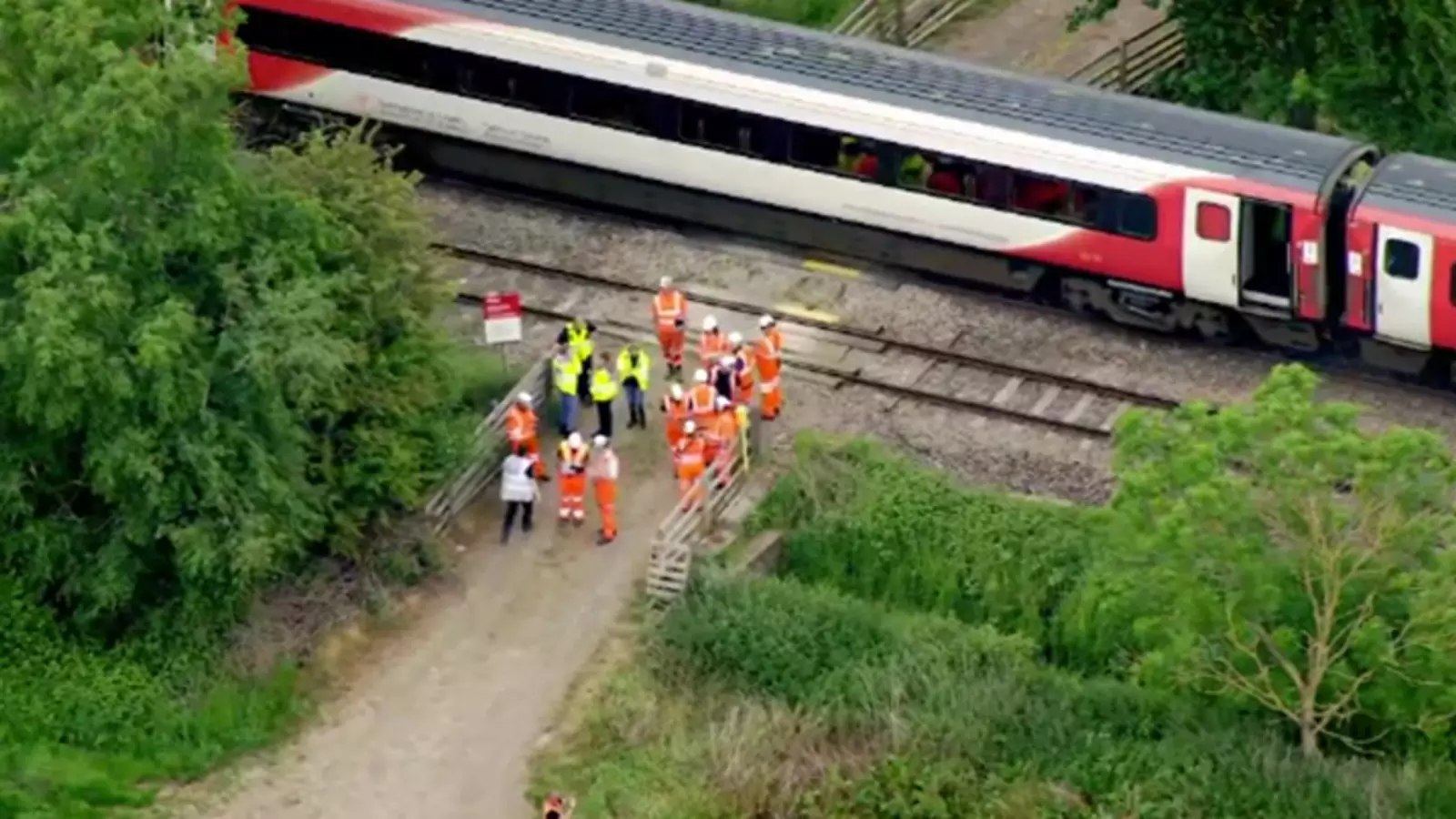In an era where we pride ourselves on the advancements of technology and modern safety protocols, the recent train accident in Herefordshire shines a stark light on systemic failures that threaten public safety. Late on Thursday morning, a train collided with an agricultural trailer at a level crossing, injuring over a dozen individuals and raising crucial questions regarding the efficacy of current safety measures. This tragic incident is not merely an unfortunate event; it is a manifestation of complacency within rail safety regulations.
Dissecting the Incident
When the British Transport Police reported that they had been called to the scene just after 10:40 AM, it became painfully clear that the ramifications of such accidents extend far beyond immediate physical injuries. A 32-year-old man from Bromyard was arrested on the grounds of endangering safety on the railway, but it seems that the accountability doesn’t end there. How many such incidents will it take for the authorities to recognize the increasing risks at user-operated level crossings? The injuries sustained by the passengers—including airlifting a man to the hospital—remind us that every life impacted needs to catalyze change, not just headline stories.
A Systematic Failure
The scenario at the Nordan Farm crossing further illustrates the troubling realities of our rail system: a user-operated crossing signifies that the onus is on individuals to manage safety rather than implement automated safeguards. Such reliance on human intervention in a system designed for mass transportation is fraught with danger. The fact that 15 train passengers were evaluated and discharged without significant injuries may provide a momentary sigh of relief, but it does not absolve the system from scrutiny.
The response to this incident by emergency services was commendable, yet it begs the question: why do we wait for an accident to galvanize our enforcement of safety protocols? The Rail Accident Investigation Branch (RAIB) has initiated a preliminary examination of the incident, signaling that investigations may follow, but it should never have come to this point.
Looking Ahead
The ensuing disruption on the train lines between Hereford and Craven Arms is a temporary inconvenience, but broader implications linger. More than just inconvenience, this represents a community frustrated, its confidence in railway safety shaken. Transport for Wales, which has begun to implement replacement road transport while facilitating ticket acceptance on other operators, must be vigilant and proactive rather than reactive.
In a landscape where human lives are so tightly interwoven with systems of transport, the alignment between technological progress and regulatory frameworks should be a priority rather than an afterthought. The Herefordshire train collision is an alarming reminder that one incident opens the floodgates to a cascade of questions about the integrity, accountability, and future of our rail networks.
The ramifications stretch well beyond that singular moment; they resonate within the very fabric of our dedication to public safety. It is high time that we overcome this culture of “waiting for the next incident” and start advocating for meaningful reforms in rail safety measures now before more lives are irrevocably changed.


Leave a Reply